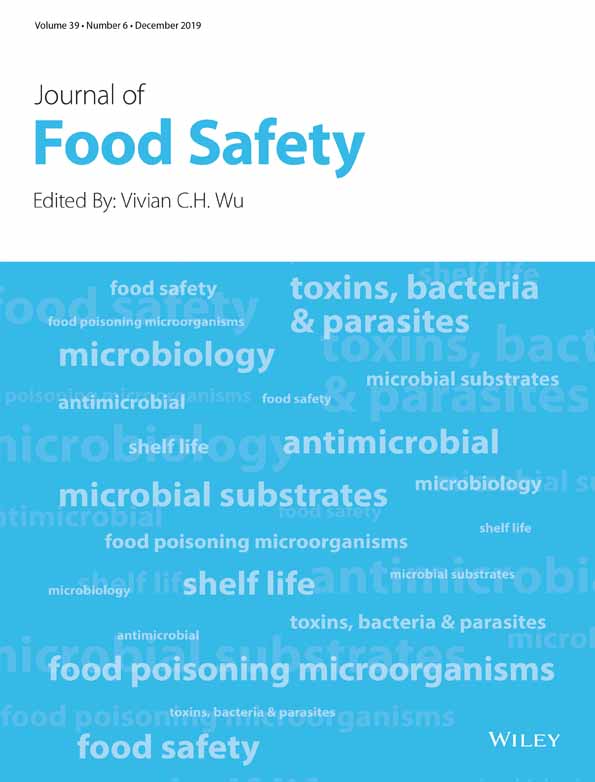Application of combined UV-C light and ethanol treatment for the reduction of pathogenic Escherichia coli and Bacillus cereus on Gwamegi (semidried Pacific saury)
Funding information: National Research Foundation of Korea, Grant/Award Number: NFR-2018R1D1A3B07047673; Chung-Ang University Graduate Research Scholarship
Abstract
This study investigated the combined effects of different doses of UV-C light at 260 nm (0–1,800 mWs/cm2) and ethanol (0–70%) on the reduction of Escherichia coli and Bacillus cereus in experimentally contaminated Gwamegi (semidried Pacific saury). After combined treatment of 4,800 mWs/cm2 of UV-C and 70% ethanol, E. coli and B. cereus were reduced by 3.03 and 2.73 log CFU/g, respectively. However, quality losses of the product, including changes in pH, the thiobarbituric acid-reactive substances value, and color occurred after storage for 2 weeks at 5°C. The results suggested that a combination of 2,400 mWs/cm2 of UV-C and 70% ethanol could potentially be used to inactivate E. coli and B. cereus in this dried fish product during storage for 7 days without any adverse changes in the qualities of the fillets.
Practical Applications
Since Gwamegi is traditionally air-dried in the open, it could easily become contaminated by pathogens. Treatment with the combination of UV-C (2,400 mWs/cm2) and ethanol (70%) is optimal to prevent microbial proliferation on the product during drying without causing organoleptic changes. Despite the cost, this hurdle technology can be applied in the small fishery industry.




